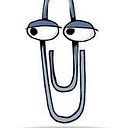How to better present a partner’s page containing a large number of logos in PowerPoint?
In my job, I often have to design and produce different types of presentations. Over the years, I have experienced that a good presentation can help clients better understand and accept what you want to express. At the same time, not only for business purposes, I also guide my daughter to design and create presentations for homework.So, I wish to share the experiences I have gained all these years to help more people to use this excellent application better!
The case I am going to share today is a “partner” page that is involved in most business presentations, which mostly consists of several logos or icons.
When dealing with such pages, we often struggle with the following issues:
1. logos or icons are of different sizes and shapes, making it difficult to arrange them properly.
2. Logos or icons with too many colors are difficult to stack neatly and clearly on the same page.
Here is an easy-to-use technique I call “Magic Color blocks”, let me use an example to demonstrate.
At first, I was given a partner page like that:
The content of the original page is not much, it is mainly composed of two parts, a short text description and the partner Logo:
Generally, it should use the “Magic Color blocks” method for pages like this. In particular, we need to arrange these logos neatly, and then at the bottom of each logo, use a uniform color block as its background color:
Look, it’s much neater, isn’t it?
To keep these colorful logos from looking too cluttered, I would make them look more coordinated by turning up the brightness of the logos and using a decolorized and reverse white process.
If you are not so demanding about details, in general, you only need two steps. The first step is to select a Logo and set the Color in the Format tab: select the first row of the first Saturation: 0% option. In this way, no matter how colorful the picture is, it will quickly change to black and white.
The second step is to select the Washout effect in the Recolor menu. Now, compare with the original Logo above, the basic reverse white processing is done.
Let it be said that the above two-step foolproof operation is intended for “non-perfectionist” creators, because the Washout effect does not apply to all images. For images with color nesting, the image produced after this simple two-step process is not as expected as shown below, and the Lion King’s avatar is barely recognizable.
This may require you to use other image processing applications, such as Photoshop for a better optimization (see below), and then choose the effect you like according to your needs.
Here is the page after I have done the reverse white process:
It’s pretty neat, but it looks rather empty and plain, right?
So how can we make the page layout look better?
Actually, we can try a staggered layout of different sizes, like this:
Here, I would like to suggest that when the logos are staggered, if you can apply the principle of “near real and far virtual”, adjust the color of the background of the logo, or add a little Soft Edges effect, it will look more realistic.
There is one point to note about staggered typography, in order to look balanced, try to make the total area of the color blocks on the left and right sides approximately equal.
Next, you can put some small light-colored blocks as atmospheric elements, which is intended to create the feeling that more partners are to appear from the page, and you can also use shadow effects under the Logo blocks to improve the sense of dimensionality:
After that, if you still feel that the bottom of the page is a bit empty, you can try to put a particle material to make the page more vivid. And, you can also change the rectangle into a rounded rectangle, which will look more comfortable. The following operation is: select the rectangle color block, through the Format tab of the Edit Shape menu under the Change Shape, re-set the shape (choose rounded rectangle)
Thus, the original angular color block becomes more rounded and comfortable:
Usually this is enough, but in order to give the logo a stronger sense of dispersal from the inside out, I would also draw out the outward path:
How is this outward path drawn? It’s actually not that tricky, you first need to determine the center of the color block element and then draw it with Freedom:Shape, like this:
Then, depending on the direction of diffusion, the drawn shape can be adjusted to a transparent gradient:
Looks pretty good, right? If you want to download the source file, you can email me mergeinto@hotmail.com.
